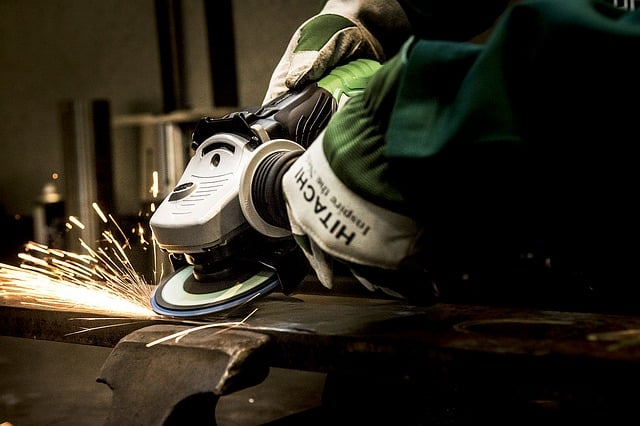
Do-It-Yourself, or “DIY,” projects are a fun way to improve your home. By creating and modifying your living space, you are challenging yourself both creatively and functionally. It is very important before undertaking any type of DIY home improvement job to familiarize yourself with the safety risks associated with that project. These risks can come from the use of tools, your choice of clothing and protective gear, and the precautions you take to prevent personal injuries.
Proper Use of Hand Tools
Hand tools are very useful in situations which prohibit the use of power tools. These situations include working on areas too small for a power tool to fit properly, such as an indented screw hole, non-ventilated rooms which prohibit the use of gas-powered tools, and rooms with no available electricity. Hand tools must be inspected regularly for damages or defects, and used only for their intended purpose. Misuse of a hand-tool can cause injury to the user. This being the case, you should always research proper usage of tools before attempting to use them. Preventative measures are essential when operating both hand and power tools. When using sharp tools, you should always be aware of any other workers in the room and potential trip hazards, such as loose wires or building material on the ground. Keeping all blades sharp and rust-free eliminates many of the injury risks often associated with bladed tools.
- Ladder Safety (PDF) – Stanford University provides a listing of guidelines regarding safe usage of ladders in the workplace.
- CPSC Ladder Safety 101 – An article from the United States Consumer Product Safety Commission outlines the risks and safety procedures needed to properly use a ladder.
- Safe Use of Tools – The Louisiana State University Safety Manual gives advice on safe use of hand tools and portable power tools.
Proper Use of Power Tools
There is a wide variety of power tools available for purchase and home use. Power tools can be powered by gasoline, batteries, electricity, compressed air, hydraulic fluids, and even gunpowder. Each type of power comes with a different type of associated risk. Gasoline is extremely flammable, and should therefore be kept away from any open flame or source of heat. Battery-powered tools can shock the user, and can leak battery acid if dropped or abused. Electric tools are connected to power outlets, and therefore harness a great deal of electricity, which could cause severe electrocution if used improperly, damaged either on the wire or the body of the tool, or submerged in water. Each type of power tool is unique, and should be used with caution. Before using a power tool, know how to use its built-in safety features.
- Power Tool Safety Guide – The University of Maine Cooperative Extension Farm Safety Program offers a bulletin on power tool safety.
- Table Saw Safety Rules – Popular Woodworking Magazine offers a guide to the safe use of woodworking tools.
- PBS DIY Safety Guide – PBS provides a listing of safe practices for common household tools.
Choosing the Right Clothing
Your choice of clothing is very important when improving the home. Loose-fitting articles and jewelry have the potential to be snagged on sharp objects and moving parts. This could result in the clothing or jewelry being destroyed, or, more importantly, severe injury to the wearer. In order to prevent this issue, the clothing you wear while working should be tight-fitting with nothing hanging from your person. Clothing is inherently flammable, so great caution should be taken when working near an open flame or source of heat. When working with chemicals, it is very important to make sure your clothing is free from holes or openings in order to prevent chemicals from coming into contact with your skin.
- Proper Work Clothing (PDF) – An installment of the “Toolbox Talk” series from the Wisconsin State Government addresses what to wear in the workplace.
- Chemical Protective Clothing – The Centers for Disease Control and Prevention provide recommendations for what types of clothing to wear when working with specific chemicals.
Use of Personal Protective Equipment (PPE)
Every DIY project and every tool has a different type of associated risk. In order to be fully prepared for these risks, it is important to make sure you have the right protective gear. This gear includes, but is certainly not limited to, items such as safety goggles, welding masks, cutting gloves, safety harnesses, and steel-toe work boots. Be sure to research the safety gear associated with the tools and methods you are using in your DIY project. Preventative measures should always be taken when working with chemicals. Gloves should be worn without exception, as your hands could potentially come into contact with hazardous chemicals. Even prescription eyewear falls under the category of Personal Protective Equipment, as it decreases the chance of occupational hazards and fallacies. Always wear your prescribed glasses or contacts when working on your home.
- Princeton Guide to PPE – Princeton University offers a comprehensive guide to Personal Protective Equipment.
- National Safety Council PPE Tips – This resource from the National Safety Council provides safety facts and tips about Personal Protective Equipment.
- AOA Eye Protection Tips – The American Optometric Association offers tips on protecting your eyes at work.
- Guidance for Choosing Protective Eye Wear – The University of Wisconsin-Madison department of Occupational Health services offers a comprehensive guide on safety eye wear.
Other Considerations
Many older homes were built using lead paint and piping. Lead is extremely toxic to the human body, and should therefore be approached very carefully. Consider hiring a professional for lead removal, rather than attempting to remove it yourself, despite the fact that you may have proper safety gear. Asbestos are a known carcinogen and are also an issue when remodeling or working on your home. Though asbestos are harmless unless disturbed, a DIY project may release harmful substances from surfaces which contain asbestos. A professional should be consulted when dealing with asbestos, as they are properly trained to safely handle toxic materials. A fire extinguisher should always be kept within reach when improving the home, as there are several fire hazards present. Fire safety risks can stem from electrical work, welding, and grease or chemicals coming into contact with heat or open flames. When working with heavier items, be sure to utilize proper lifting techniques in order to protect your muscles and joints.
- Health Hazards of Lead – The Massachusetts Labor and Workforce Development warns about the dangers of lead in both workers and children.
- Lead Paint Safety (PDF) – The US Department of Housing and Urban Development field provides a guide for painting, home maintenance, and renovation work.
- Asbestos Safety – An Environmental Protection Agency article discusses how to approach asbestos in the home or workplace.
- Proper Lifting Techniques – The Louisiana State University offers this guide to safer lifting and injury prevention when working with heavy objects.
 11 Home Security and Safety Tips
11 Home Security and Safety Tips  Fix-It 101: The Fix-It Literacy Guide
Fix-It 101: The Fix-It Literacy Guide  Best Cities for Sidewalks and Winter Safety
Best Cities for Sidewalks and Winter Safety  Green Building Glossary
Green Building Glossary  Home Safety and Security Advice for Solo Female Homeowners
Home Safety and Security Advice for Solo Female Homeowners 

Are You Familiar With This Topic? Share Your Experience.